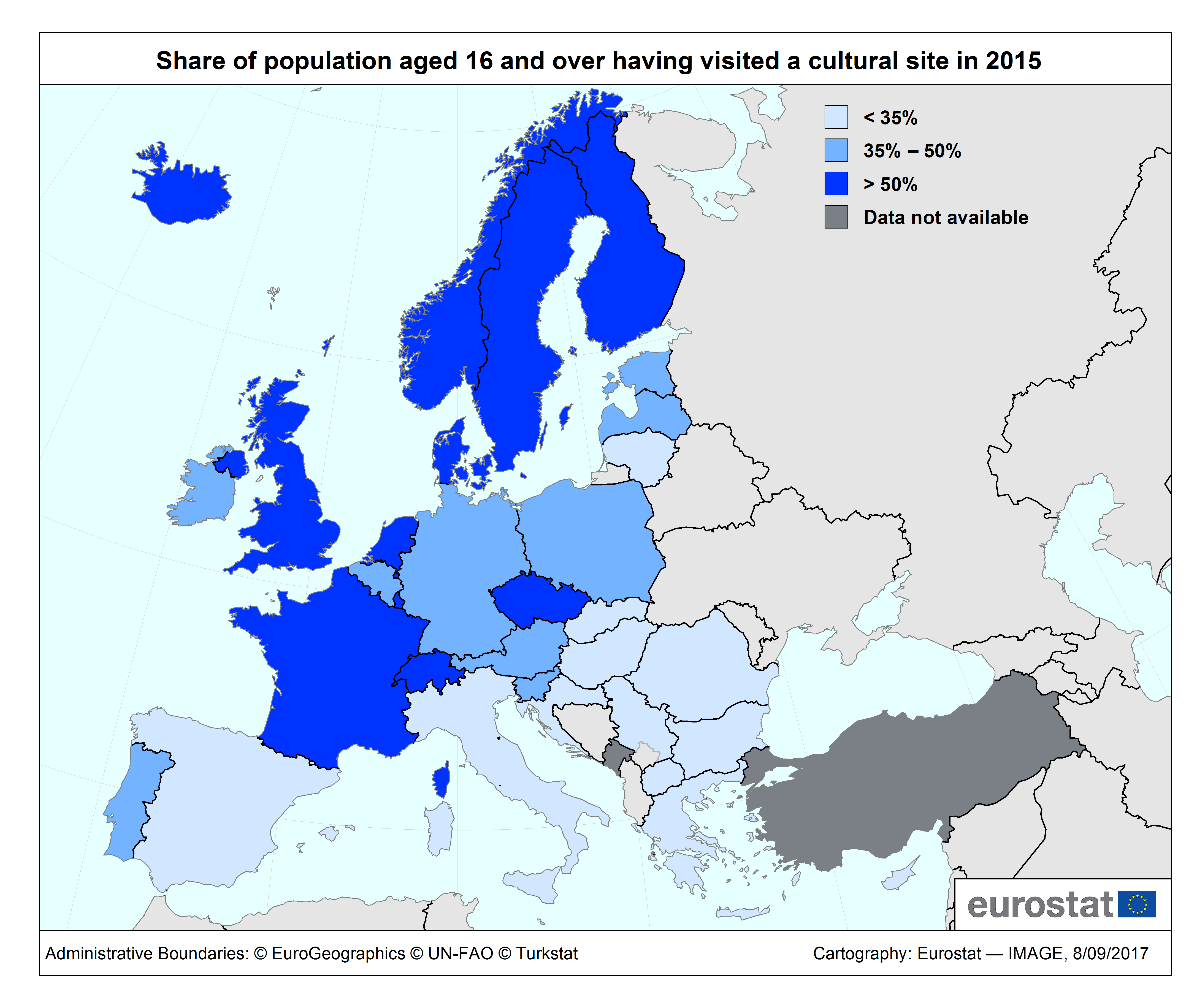43.4% of the European Union (EU) population aged 16 and over visited a cultural site such as a historical monument, a museum, an art gallery or an archaeological site at least once in 2015.
This participation rate declines with age, with the highest levels recorded for the age groups of 25-34 (48.5%) and 16-24 years (47.5%).
This news item marks European Heritage days 2017.
Highest percentages in the North of the EU, lowest in southern Member States
Across the EU Member States, two-thirds of people aged 16 and over in Sweden (67.2%) visited a cultural site in 2015, and about 6 in 10 in Denmark, the Netherlands and Finland (all 61.4%). These Member States were followed by Luxembourg (55.6%), the United Kingdom (54.7%), France (53.7%) and the Czech Republic (52.1%).
At the opposite end of the scale, fewer than a quarter of the population visited a historical monument, a museum, an art gallery or an archaeological site in Bulgaria (14.6%), Greece (16.9%), Romania (18.3%), Croatia (19.2%) and Cyprus (20.5%), followed by Italy (26.1%) and Malta (26.4%).
The source dataset can be found here.
Compared with 2006, in 2015 the proportion of the population aged 16 and over who visited at least one cultural site rose in a vast majority of Member States for which the time series is available. The highest increases were registered in the Netherlands (from 49.1% in 2016 to 61.4% in 2015, or +12.3 percentage points – pp) and Malta (+11.7 pp), ahead of Estonia (+9.9 pp), France (+9.3 pp) and the Czech Republic (+8.0 pp).
In contrast, a smaller proportion of the population visited a cultural site in 2015 than in 2006 in seven Member States. The most significant changes were registered in Slovakia (44.4% in 2006 vs. 33.7% in 2015, or -10.7 pp), Spain (-10.5 pp), Germany (-7.9 pp), Hungary (-6.3 pp) and Cyprus (-5.4 pp).


